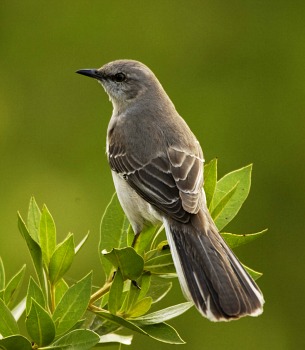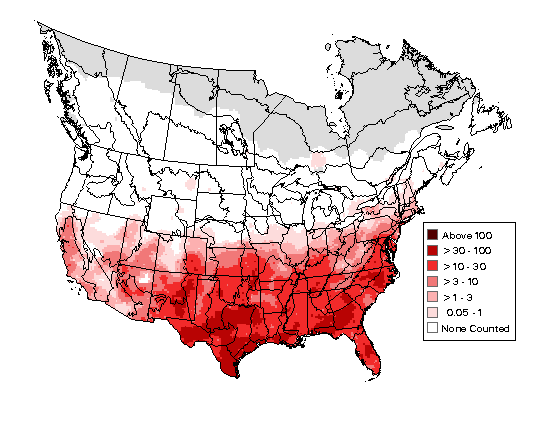Northern Mockingbird

Northern Mockingbird Information
Length: 9 - 11"
Habitat: Residential areas, farmland, roadsides, city parks, gardens, open grassy areas with thickets.
Requires a tree or other high perch from which to sing and defend its territory.
Diet: Spiders and insects; wild fruit and berries.
Additional Information
Northern MockingbirdDescription, distribution, habitat, behavior, diet, reproduction, predators, and conservation status. Includes photos, range map, and songs and calls. (From Wikipedia)
Northern Mockingbird

© Steve Byland | Dreamstime
Northern Mockingbird
Identification Tips
- Slender bill
- Gray head and upperparts
- Yellow eye
- White underparts
- Long black tail with white outer tail feathers
- White wing bars
- White patch in wing, especially visible in flight
- Black legs
- Sexes similar
- Juvenile has spotted breast
- Most often found in scrubby habitats and in urban areas
(Credit: U. S. Geological Survey)
Note: The coloring of the Northern Mockingbird's upperparts varies from black to gray-brown.
Breeding Bird Survey Map,
2011-2015

(Image credit: USGS)
Range in New England
Northern Mockingbirds breed throughout New England, with the exception of northern Maine. They are found year-round in the rest of New England, tending to be more abundant in the southern part of the region.
Year-round Map from eBird
Year-round sightings of the Northern Mockingbird
over last 10 years![]()
Christmas Bird Count Map
Historical CBC Map from USGS